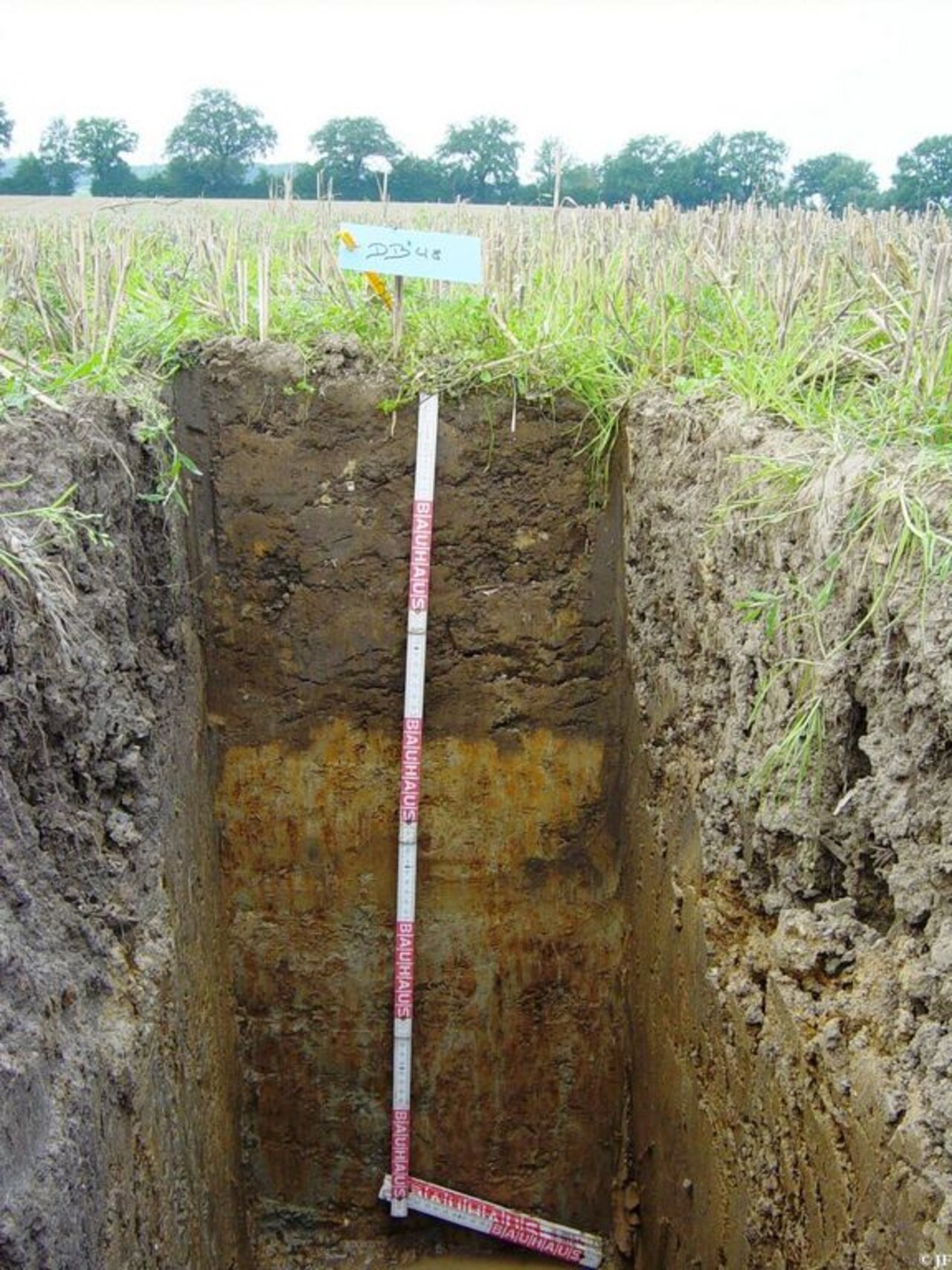Project
Long term effects of organic farming systems

Development of soil fertily, plant production and biodiversity after conversion of the experimental farm in Trenthorst/ Wulmenau towards organic farming in 2001
Agricultural ecosystems are mirroring their management. Maintaining farming practices will drive them in direction of a steady state, provided that climate and environmental conditions remain constant. Changes in cultivated crops, crop rotations, fertilisation, use of pesticides, soil tillage, grazing, livestock keeping and density and other management changes will influence ecosystems development. A long term farming system comparison on these questions is established in Trenthorst. The development of soil parameters, yields and qualities of plants and biodiversity is analysed since conversion of the site to organic farming in 2001.
Background and Objective
Research shall lead to consistent site specific results on long term effects of conversion to organic farming on agro-ecosystems. Differences of systems with and without livestock in soil fertility, productivity and biodiversity shall be analysed. Also developments of conventional and organic sites are compared.
Approach
At the location Trenthorst the intensive conventional 600 ha farm was converted to an organically managed experimental farm in 2001. The initial status of soils was analysed on 600 ha agricultural areas by means of a 30 m raster sampling. Soil samples are conserved for future advanced analyses (dry, -20°C, -80°C). Centre of research from 2003-2014 is the comparison of an organic dairy and an organic cash crop rotation, with adjacent fields and grassland. Also conventionally cultivated surrounding crop fields are sampled. In the year 2003 GPS defined monitoring areas were installed based on the raster points. At fixed points in these areas yearly soil and plant samples are taken. Nutrient and carbon contents of soils, yields and quality of crops as well as biodiversity and development of flora, insects, spiders, amphibians, birds and hares are determined.
Preliminary Results
Today (2014) two six year crop rotations are finished. The final soil sampling will be done in 2015. A lot of data were generated and must be evaluated to supply a complete view on long term management effects on the development of agro-ecosystems. Sites and samples of the long term monitoring have an excellent documentation and are used in special research projects on the assessment of different farming and management systems.
Soil fertility
The organic dairy farm shows a smooth course of the Nmin-contents in the soils, whereas in the cash crop farm higher amplitudes are measured. This can be explained by the harvesting of the grass clover as forage, which removes nitrogen and prevents a nitrogen accumulation. In the cash crop farm where grass clover is mulched and organic nitrogen is prone to mineralisation on site. The distribution of farmyard manure leads to a more even nitrogen supply during the rotation. As this is not possible in a cash crop farm, the Nmin-contents decrease earlier than in a livestock farm, although they are higher after the first year of the crop rotation that is cultivated with mulched clover-grass in comparison to the harvested clover grass in the dairy farm rotation.
Plant available phosphorus and potassium reserves of soils are declining due to omitted fertilisation since conversion. But they are still appropriate ranging in soil supply classes C and B.
In comparison to the conventional sites with pure cash crop production the introduction of fodder crops in the organic rotations, notably clover-grass, the water infiltration rates of soils were clearly enhanced.
Plant production
In the first three years of the crop rotations the average yield levels of cash crops were comparable in stockless and livestock dairy farm. The dairy and cash crop farm obtained similar average yields, whereas the yields of the mixed farm on further farm parts were lower. This can be attributed to more inhomogeneous fields and to the oil crops in the rotation of the mixed farm, which led to a lower yield potential of the rotation and to weed problems.
In 2014 two crop rotation periods are finished after 12 years. Today the organic cash crop farm has lower and more variable crop yields than the adjacent organic dairy farm. Obvious sign of cultivation problems are higher thistle populations in the cash crop rotation.
In a first year of monitoring the different organic farm types and crop rotations showed no differences in Mycotoxin (DON) contamination of their products. Straw of oats and summer barley in mixture with peas were obviously prone to infections with fusarium even in dry years. In grassland and forage crops (red clover grass, white clover) a constant DON level was found. The conventional wheat in the monitoring program seemed to be more infested by fusarium in straw and grains. Higher mycotoxin levels in straw of oats and barley may result from higher plant densities and prolonged ripening times. The higher DON levels in grains and straw of the conventional grown wheat can be an effect of higher shoot density and a denser crop rotation.
Biodiversity
Floral biodiversity on the site changed massively. In 2001 nearly only one cultivated crop and some typical associated field weeds were present. In 2008 already 12 wild plants species were found. The culture crop is determining the arable flora to a large extent (spring and winter crops, light transmission). But new flowering species like corncockle, cornflowers and wild poppy were still found sporadic. To enhance the flowering image of organic farming a targeted measures seem necessary, e.g., by lower seed cleaning and integration of flowering stripes. In grassland lower vegetation changings occurred up to 2008 but density of dock increased. Bird and hare population reacted on the management changes. Questions on the importance of remaining stubble fields for birds in winter were analyzed. Bird countings in 2002/2003 on fields of institute area, an adjacent conventional site and a site with long lasting organic management were compared. Numbers of raptors in autumn and winter and numbers of granivore and insectivore birds in autumn were significantly higher in organic than in conventional fields. Differences could be explained by higher percentage of stubble and green areas in organic farming.
Ground beetle populations increased, whereas spider population on soils decreased (species number, abundance) in the first years after conversion to organic farming.
Thünen-Contact

Involved Thünen-Partners
Duration
1.2001 - 12.2027
More Information
Project status:
ongoing
Publications
- 0
Paulsen HM, Klinkmann D, Kipp H, Klein A (2025) Yields and field management data of two adjacent organic arable crop rotations serving a dairy farm and a pig farm at the Thünen-Institute of Organic Farming in North Germany [Datenpublikation]. 1 SQLITE file; Version 1. Genève: Zenodo, DOI:10.5281/zenodo.15593454
- 1
Schmidt F, Kruse M, Paulsen HM (2024) Kohlenstoffspeicherung in Böden und Gehölzen in einem landwirtschaftlichen Betrieb. In: Bruder V, Röder-Dreher U, Breuer L, Herzig C, Gattinger A (eds) Landwirtschaft und Ernährung - Transformation macht nur gemeinsam Sinn : 17. Wissenschaftstagung Ökologischer Landbau, 5.-8. März 2024, Justus-Liebig-Universität Gießen ; Tagungsband. 1. Auflage. Frankfurt am Main: FiBL Deutschland eV, pp 372-373, DOI:10.5281/zenodo.11204339
- 2
Schüler M, Paulsen HM, Berg W, Prochnow A (2017) Accounting for inter-annual variability of farm activity data for calculation of greenhouse gas emissions in dairy farming. Int J Life Cycle Assessment 23(1):41-54, DOI:10.1007/s11367-017-1307-x
- 3
Ohm M, Paulsen HM, Moos JH, Eichler-Löbermann B (2017) Long-term negative phosphorus budgets in organic crop rotations deplete plant-available phosphorus from soil. Agronomy Sustainable Dev 37(3):17, DOI:10.1007/s13593-017-0425-y
- 4
Moos JH, Schrader S, Paulsen HM (2017) Reduced tillage enhances earthworm abundance and biomass in organic farming: A meta-analysis. Landbauforsch Appl Agric Forestry Res 67(3-4):123-128, DOI:10.3220/LBF1512114926000
- 5
Ohm M, Paulsen HM, Moos JH, Schüler M, Fystro G, Eichler-Löbermann B (2016) Development of soil phosphorus and phosphatase activities under different management in an organic farm over 12 years from conversion. In: Phosphorus 2020 - challenges for synthesis, agriculture and ecosystems, 8th international phosphorus workshop IPW 8, Sept. 12-16, book of abstracts, Leibnitz Science Campus Phosphorus Research Rostock, Germany. p 90
- 6
Anderson T-H, Paulsen HM (2016) Response time of soil microbial biomass after conversion from conventional to several different organic farming systems. Landbauforsch Appl Agric Forestry Res 66(4):258-271, DOI:10.3220/LBF1479196953000
- 7
Böhm H, Paulsen HM, Fischer J, Moos JH, Rahmann G (2014) Nutrients and weeds through 13 years of organic farming. In: Plantekongres 2014 : sammendrag af indlaeg, 14.-15. Januar i Herning Kongrescenter. Frederiksberg, pp 294-297
- 8
Paulsen HM, Böhm H, Moos JH, Fischer J, Schrader S, Fuß R (2013) Fruchtbarer Boden : welchen Einfluss die Landnutzung auf den Boden hat. Forschungsreport Ernähr Landwirtsch Verbrauchersch(2):16-19
- 9
Moos JH, Paulsen HM, Rahmann G (2013) Monitoring der Deckungsgrade der Segetalflora auf Flächen des ökologischen Landbaus über einen Zeitraum von 10 Jahren. In: Neuhoff D, Stumm C, Ziegler S, Rahmann G, Hamm U, Köpke U (eds) Beiträge zur 12. Wissenschaftstagung Ökologischer Landbau : Ideal und Wirklichkeit: Perspektiven ökologischer Landbewirtschaftung . Berlin: Köster, pp 322-325
- 10
Schaub D, Paulsen HM, Böhm H, Rahmann G (2008) Mineral nitrogen in the course of a cash crop and two livestock rotations - first results from the long-term monitoring Trenthorst. In: Neuhoff D, Halsberg N, Alföldi T (eds) Cultivating the future based on science : proceedings of the Second Scientific Conference of the International Society of Organic Agriculture Research (ISOFAR), held at the 16th IFOAM Organic World Congress in Cooperation with the International Federation of Organic Agriculture Movements (IFOAM) and the Consorzio ModenaBio, 18 - 20 June 2008 in Modena, Italy ; vol.1 Organic crop production. Bonn: ISOFAR, pp 124-127
- 11
Schaub D, Paulsen HM, Böhm H, Rahmann G (2007) Der Dauerbeobachtungsversuch Trenthorst - Ertragsentwicklung in verschiedenen Fruchtfolgen und Kulturen 2003-2005. In: Zikeli S, Claupein W, Dabbert S (eds) Beiträge zur 9. Wissenschaftstagung Ökologischer Landbau "Zwischen Tradition und Globalisierung" : Universität Hohenheim, 20.-23. März 2007 ; Bd. 1. Berlin: Köster, pp 81-84
- 12
Schaub D, Paulsen HM, Böhm H, Rahmann G (2007) Der Dauerbeobachtungsversuch Trenthorst - Konzeption und Versuchsaufbau. In: Zikeli S, Claupein W, Dabbert S (eds) Beiträge zur 9. Wissenschaftstagung Ökologischer Landbau "Zwischen Tradition und Globalisierung" : Universität Hohenheim, 20.-23. März 2007 ; Bd. 1. Berlin: Köster, pp 33-36
- 13
Rahmann G, Paulsen HM, Hötker H, Jeromin K, Schrader S, Haneklaus S, Schnug E (2006) Contribution of organic farming to conserving and improving biodiversity in Germany avi-fauna as an example. Asp Appl Biol 79:187-190
- 14
Schrader S, Kiehne J, Anderson T-H, Paulsen HM, Rahmann G (2006) Development of Collembolans after conversion towards organic farming. Asp Appl Biol 79:181-185
- 15
Schrader S, Kiehne J, Anderson T-H, Paulsen HM, Rahmann G (2005) Soil biota in an agro-ecosystem during conversion from conventional to organic farming. Verhandl Gesellsch Ökol 35: 468






